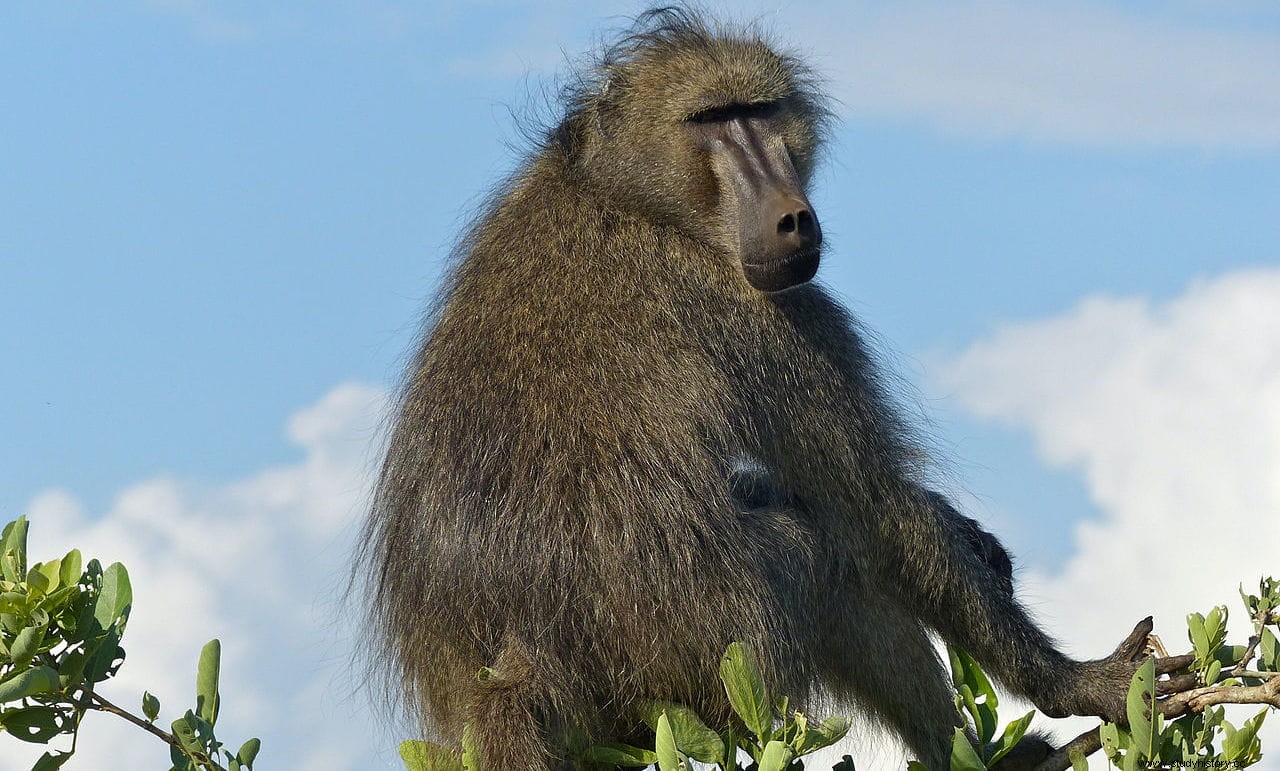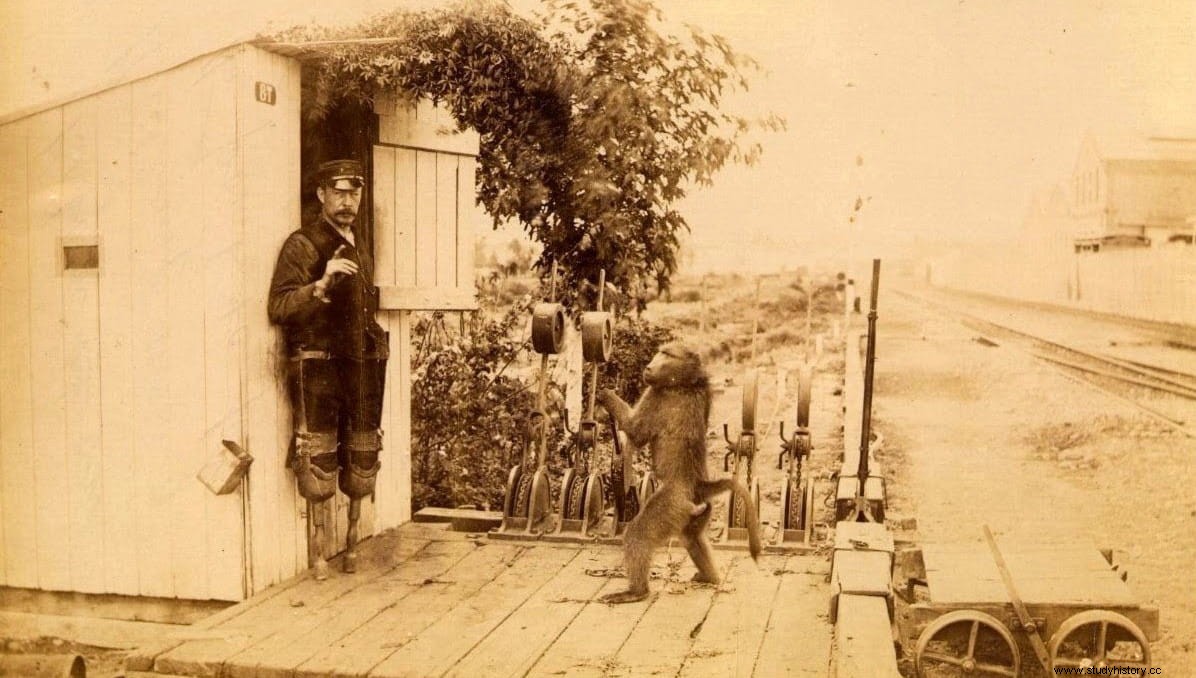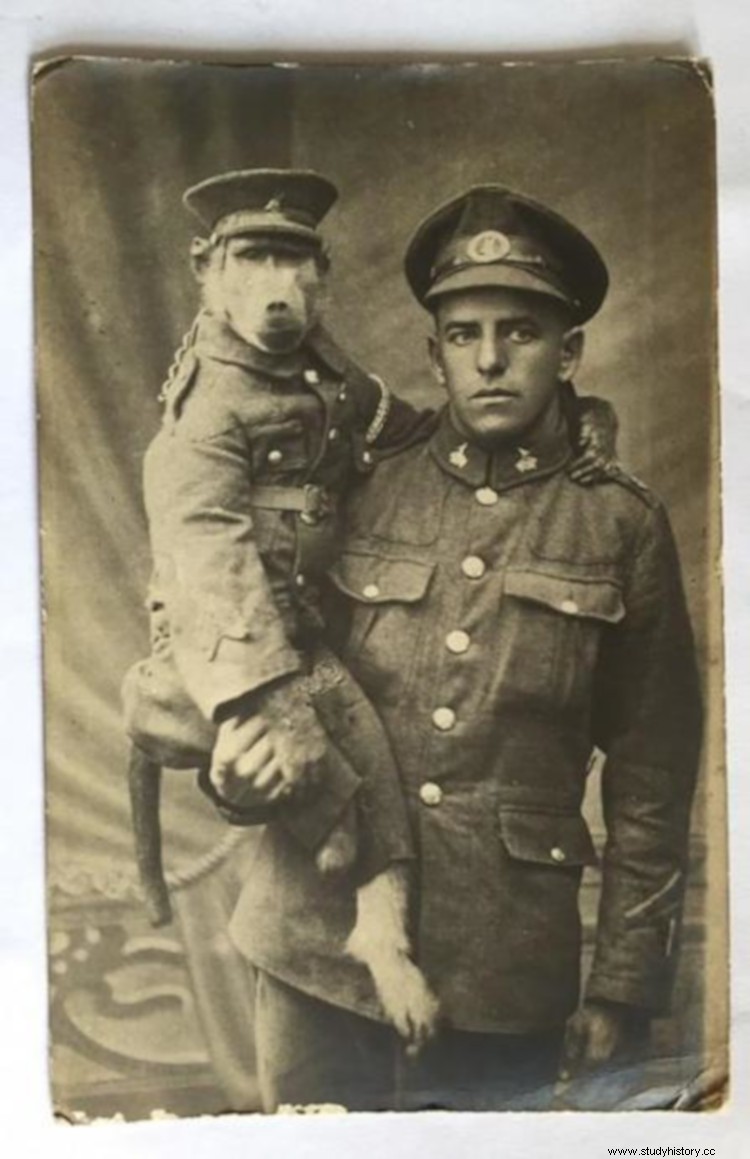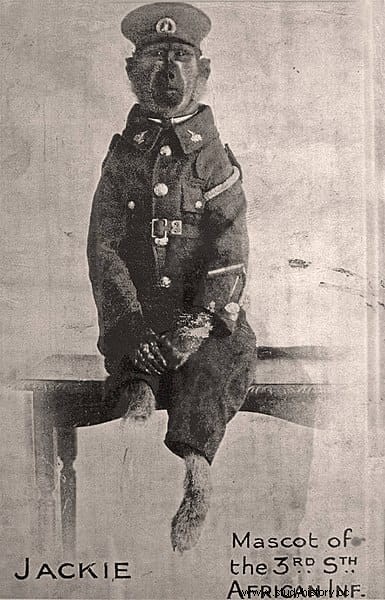Private Jackie was in the Battle of the Somme, one of the longest of the First World War; he stayed with his great friend when he was injured while they waited for the paramedics; he lost a leg to shrapnel from an explosion; he was decorated and promoted to corporal; and ended up dying in a fire in 1921. An intense and heroic life that is even more amazing considering that Jackie was not a person but a chacma baboon.
Baboons, also called baboons, are the largest primates after apes. They do not usually climb trees and their main characteristic, along with a long face, is the mane that covers their head and shoulders, especially noticeable in males. These, in addition, can be quite aggressive, which helps them to protect themselves from predators such as lions or leopards -which the entire herd faces with blows and bites-; duly channeled through domestication, this behavior was used in Ancient Egypt to use them as guardians of flocks, houses, etc.
They live on the African continent, as can be deduced, although during prehistory they also spread throughout the Middle East and Europe. In the case of Jackie, he lived in South Africa:a farmer named Albert Marr found him on his farm outside Pretoria, captured him and began to train him to help him with daily tasks, just as we said that once happened on the land of the pharaohs (one named Jack became famous in his own country for helping a guardrail in the late 19th century), though Marr claimed he treated him like a"another member of the family" . For several years they shared a roof at Cheshire Farm, until in 1914 an event changed the world.

World War I had just broken out and Marr was drafted in 1915. Having already bonded with Jackie and not wanting to leave him behind, he showed up with him for enlistment, much to the surprise of the other recruits; however, to their astonishment, the officers allowed them to stay together considering that a mascot would be beneficial for the spirit of the regiment (the 3rd South African Infantry Regiment of Transvaal ). Not only that, but they provided the animal with its own uniform, with a tunic, cap and straps, as well as its ration book and a pay stub.
He turned out to be a more than acceptable soldier, as he learned to stand firm in a resting position with his hands behind his back, to greet his superiors, light cigarettes for his comrades, eat with cutlery and, above all, stand guard, in which he had the advantages of his nature in the form of acute senses of hearing and smell, especially useful at night to avoid surprise attacks; he also had that animal sixth sense that allowed him to intuit when the enemy was going to start a bombardment or an assault on the trench, thus anticipating the defense.

Marr and Jackie were in the South African 1st Infantry Brigade , which received its baptism of fire on February 26, 1916. It was at the Battle of Agagia that a combined force of the British Empire - made up of South Africans, Sikhs, Australians, Scots, English and Egyptians - clashed in the western desert of Egypt. with another of Ottomans and Libyan Sanusid rebels. A shot wounded Marr in the shoulder and he had to lie on the ground for a while, waiting for the paramedics to arrive; Jackie stayed by his side, licking his wound and stroking his face, earning everyone's respect.
Then they traded the torrid Egyptian sun for the humid, cloudy European forests. As we explained at the beginning, the 1st Brigade was assigned to the terrible Somme campaign, which took place in the homonymous valley in northern France for four and a half months, as part of the SAOEF (South African Overseas Expeditionary Force ), which was commanded by Brigadier General Tim Lukin. It was an offensive by the British and French to break through the German lines on a forty-kilometre-wide front and divert troops from Verdun, although, ironically, in the end they recorded more casualties than in it.
In this context, in the battle of Bois d'Elville they faced the 1st and 2nd armies of the German generals Fritz von Below and Max von Gallwitz, withstanding a very heavy bombardment and surviving a percentage of casualties that was around eighty percent. They also suffered in the mudflats of Belgium, in Passchendaele and Kemmel Hill, places near Ypres, the city that gives its name to yperite or mustard gas because it was used there by the Germans for the first time; It is not known whether Jackie was forced to wear a gas mask.

Another action in which they were involved was that of the Belleau forest, near the Marne and during the so-called Spring Offensive of 1918. Basically it was an operation carried out by two American divisions of General Pershing and the French 6th Army, although it was also there was a British contingent, the IX Corps. The baboon's instinct served to warn the bewildered Captain Lloyd Williams that his Marines were being surrounded and he must fall back.
The contest was reaching its final phase but, as usual, fate wanted to play a trick on that strange couple. The 1st Brigade was retreating through West Flanders amid heavy bombardment that forced the soldiers to take cover as best they could. Amid a wave of explosions around them, Marr and Jackie were desperately trying to build a flimsy stone parapet to take cover behind when a shell fell too close and the shrapnel slightly injured the human… but it caught the primate's arm and practically ripped it apart. rennet his right leg.

Jackie, a prisoner of tension, refused to be evacuated by the orderlies, insisting on finishing the job. This is how Lieutenant Colonel RN Woodsend of the Royal Medical Corps described the situation:

Albert Marr was the one who decided; Jackie was in the army and would stay until the war was over. He was evacuated in an ambulance to a field hospital, accompanied by his medical report. As the medical officer said, the baboon needed less time than humans to be discharged, but he no longer had time to return to the front; On November 11, 1918, four years, three months and fourteen days after its start, the end of the First World War was officially proclaimed.
Jackie was decorated for his bravery and promoted to his corporal, sporting a gold stripe and three blue chevrons (one for each year of front-line service) on his uniform sleeve. For a time, he and Marr toured with the Red Cross to raise funds for the wounded and sick.
Graduated -with the corresponding papers- at the Maitland Dispersal Camp from Cape Town, he was still the center of attention at the victory parades held by the regiment; during one of them, held in the summer of 1920, he received a new distinction:the Pretoria Citizen ’s Service Medal .
He and Marr then returned home to Cheshire Farm. . But there is no complete happy ending to this story. The human had a long life, dying in 1973 at the age of eighty-four; his friend, Corporal Jackie, lost his life in 1921, in a fire that swept through the farm.
